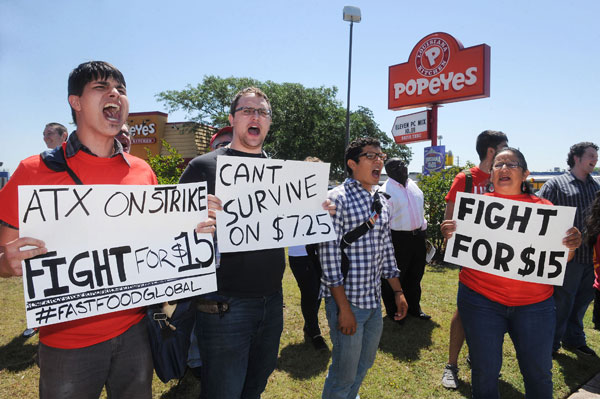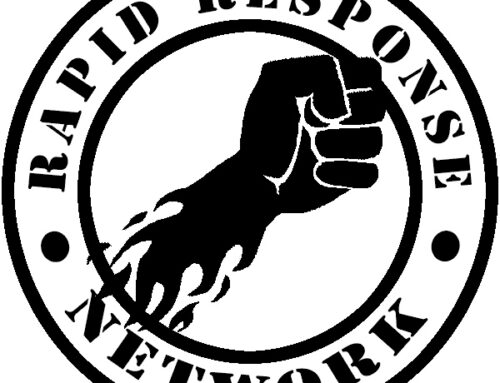
The following is an excerpt from a document written by a veteran of several paid organizing campaigns. He’s worked for SIEU (he did not work on the Fight for 15 campaign, but several of his friends did) as well as a living wage campaign.
“I got into it because it was what I was good at. I wanted to work doing something I loved, but it turns out organizations with paid staff don’t do much real organizing. All they do is sell member cards and then try to pressure people to go in the direction the staff wants instead of the direction decided collectively by the members.”
NGOs and business unions sell themselves as groups that help organize people for the good fight, and many good intention, radicalizing people believe them and work for them, only to be run ragged, overworked, underpaid, heavily guilted when they fail to perform at expectations, like some kind of door to door salesperson.
Fight for 15 campaign.
In his essay “Fast Food Unionism,” Erik Forman (2013) discusses the Fight for 15 campaign and what he calls “the McDonaldization of unions.” This basically means that unions have taken on the structure, culture, and values of their corporate counterparts. Given the information already presented and yet to be presented in this piece, I would say the so-called “grassroots community organizations” have also become McDonaldized. The rhetoric coming from the big unions today is ironic considering that the mainstream of the labor movement refused to even acknowledge the existence of fast food workers until recent years. Forman even mentions being turned down by a local UNITE-HERE leader when asking for support organizing a Starbucks he worked at. The decision to wage a unionization campaign is made not based on solidarity but on typical business calculation (Forman, 2013).
Starting in the 1970s, employers increased their efforts to resist unionization. They really began to lay down the gauntlet for unions in post-New Deal America, but the union bureaucrats refused the challenge and instead attempted to take a business approach, which contributed to not only a decline in unionized workers over the past several decades but also a decline in the average person’s faith in the unions. The unions will cut backroom deals with management and even support corporate legislative agendas in order to get a good deal with upper management. All of this comes at the expense of the rank-and-file, whose input is often excluded from the campaign and even bargaining. The potential of the average member to shut down production and force real concessions from the company is squandered at best if not ignored completely (Forman, 2013).
The current Service Employees International Union-lead “Fight for 15” campaign is nothing more than a spectacle. SEIU leaders will tell you that workers organized themselves and demanded the union’s leadership, but in reality it was all a business plan hatched out in the SEIU boardroom. The $15 an hour living wage demand was not thought up by workers, but by Berlin Rosen PR Firm. The cities targeted for the one-day –strikes were selected not based on need, but based on where SEIU bureaucrats thought they could get the most media attention and gain a push for legislation mandating higher wages. The task of union “organizers” in this campaign isn’t to organize, but to get media attention for a cause and to sell the idea to workers and community members. No permanent infrastructure or organization is left in these workplaces or communities when the campaign moves on to the next city. Often they can’t even get enough workers to support the faux strike, leaving them to substitute naïve activists from the general public in place of the workers. Of course, the purple press releases won’t ever say that (Forman, 2013)….
The full essay can be accessed here.


